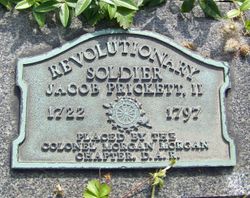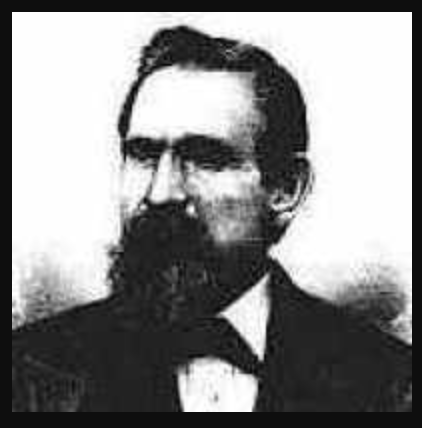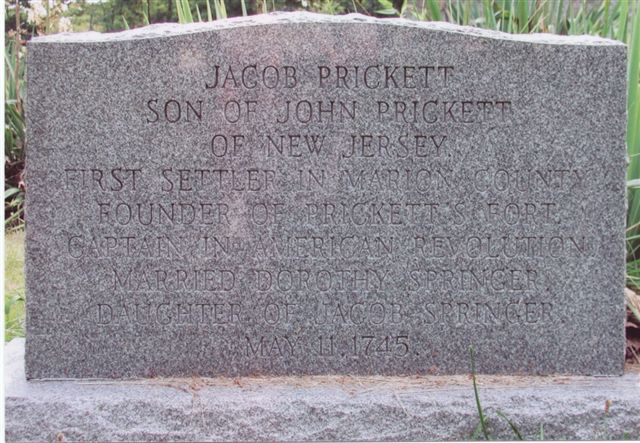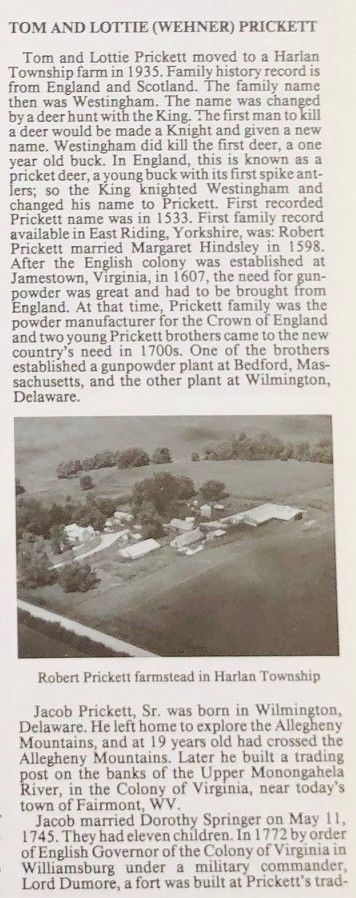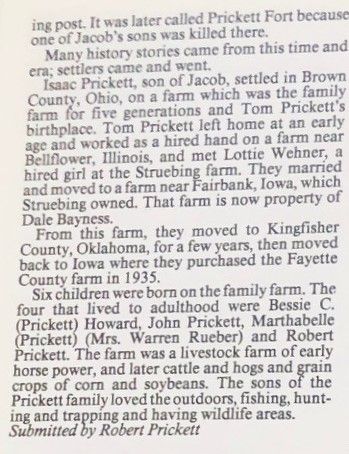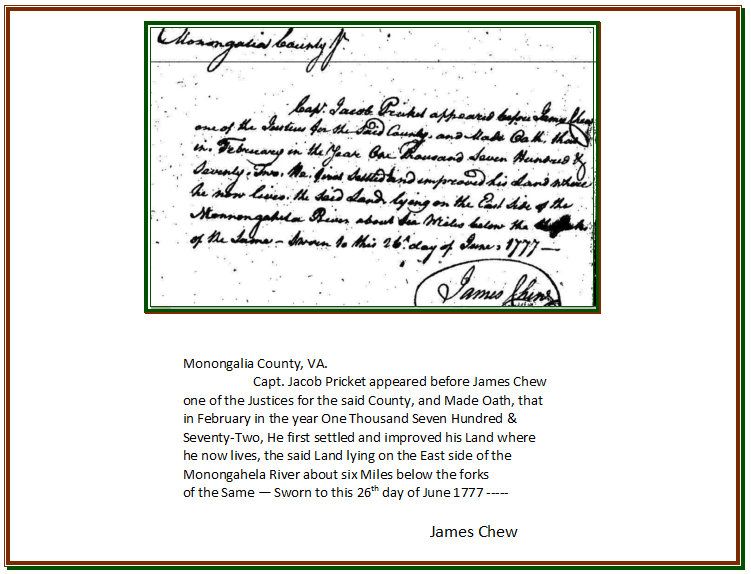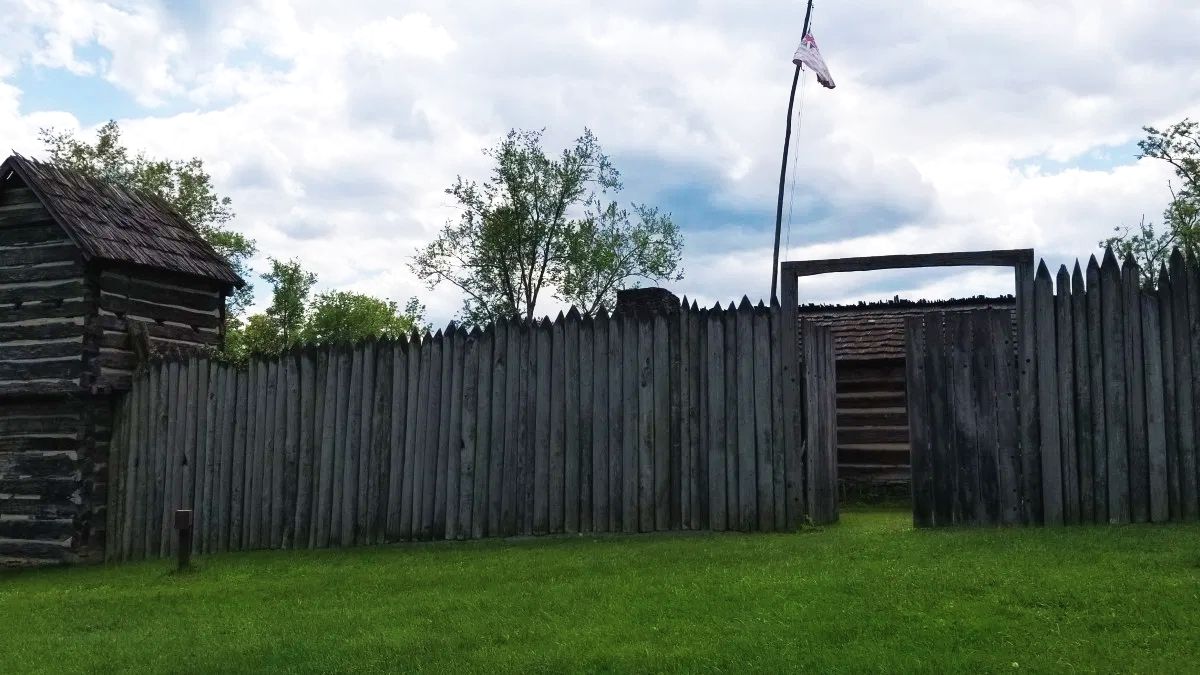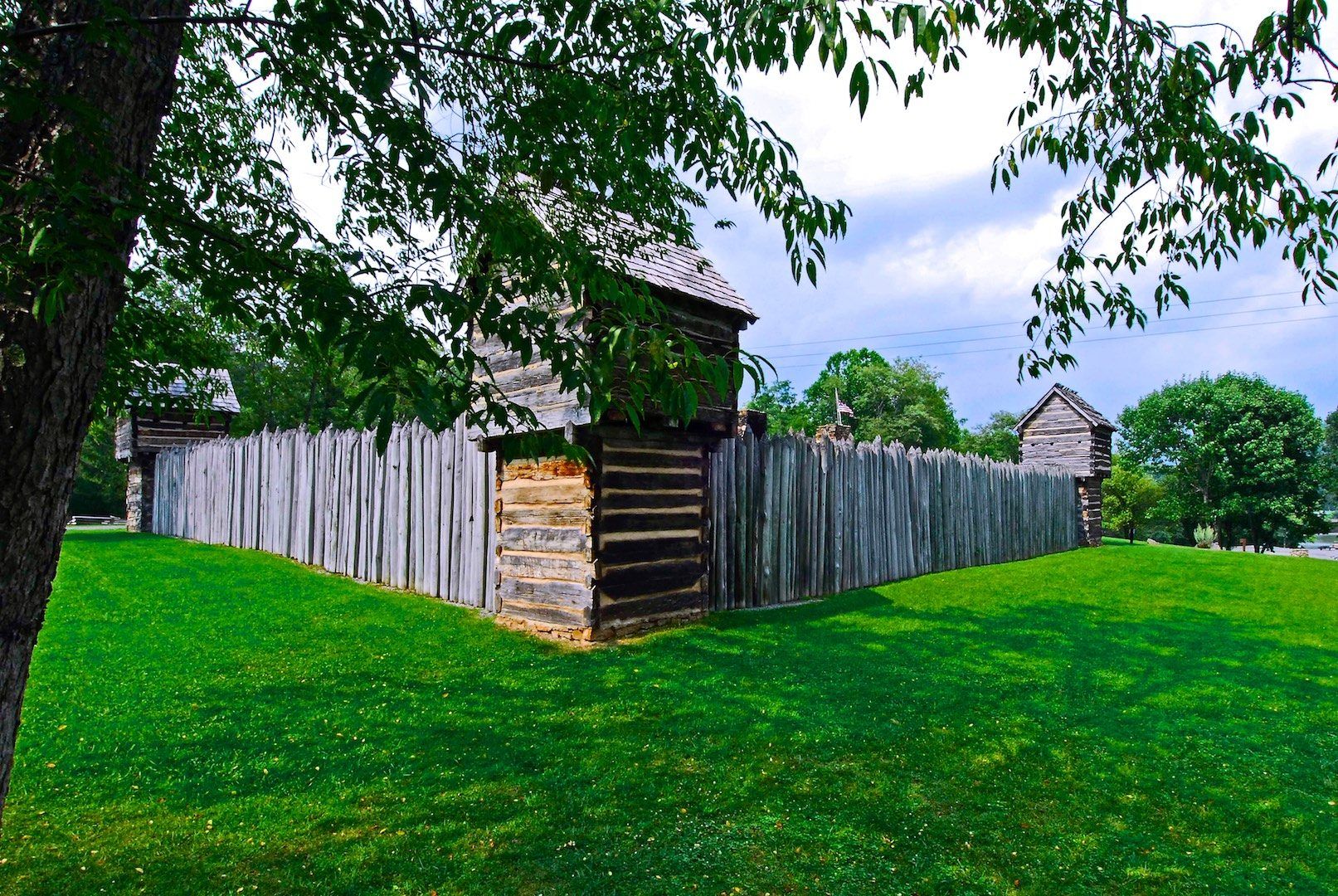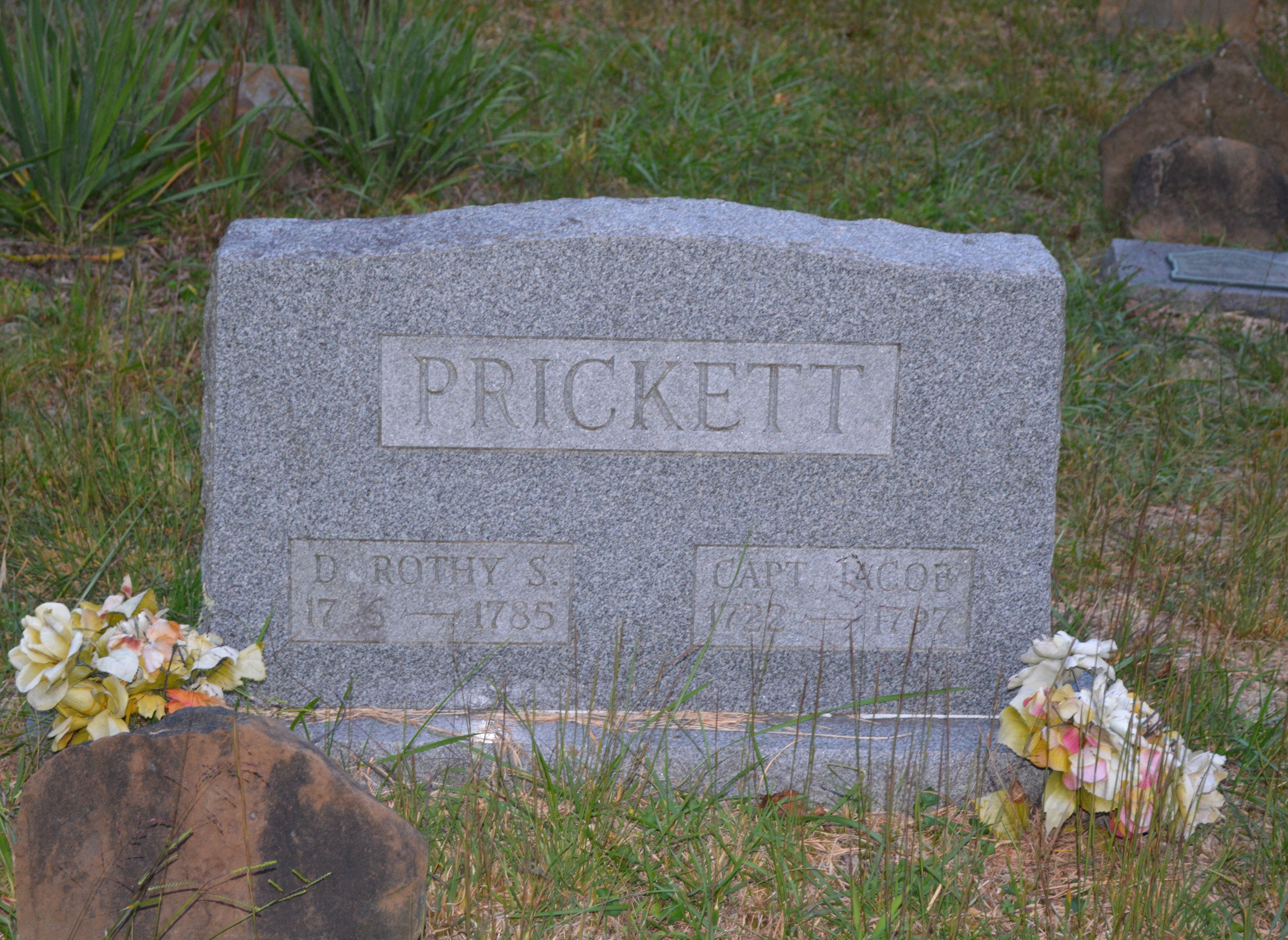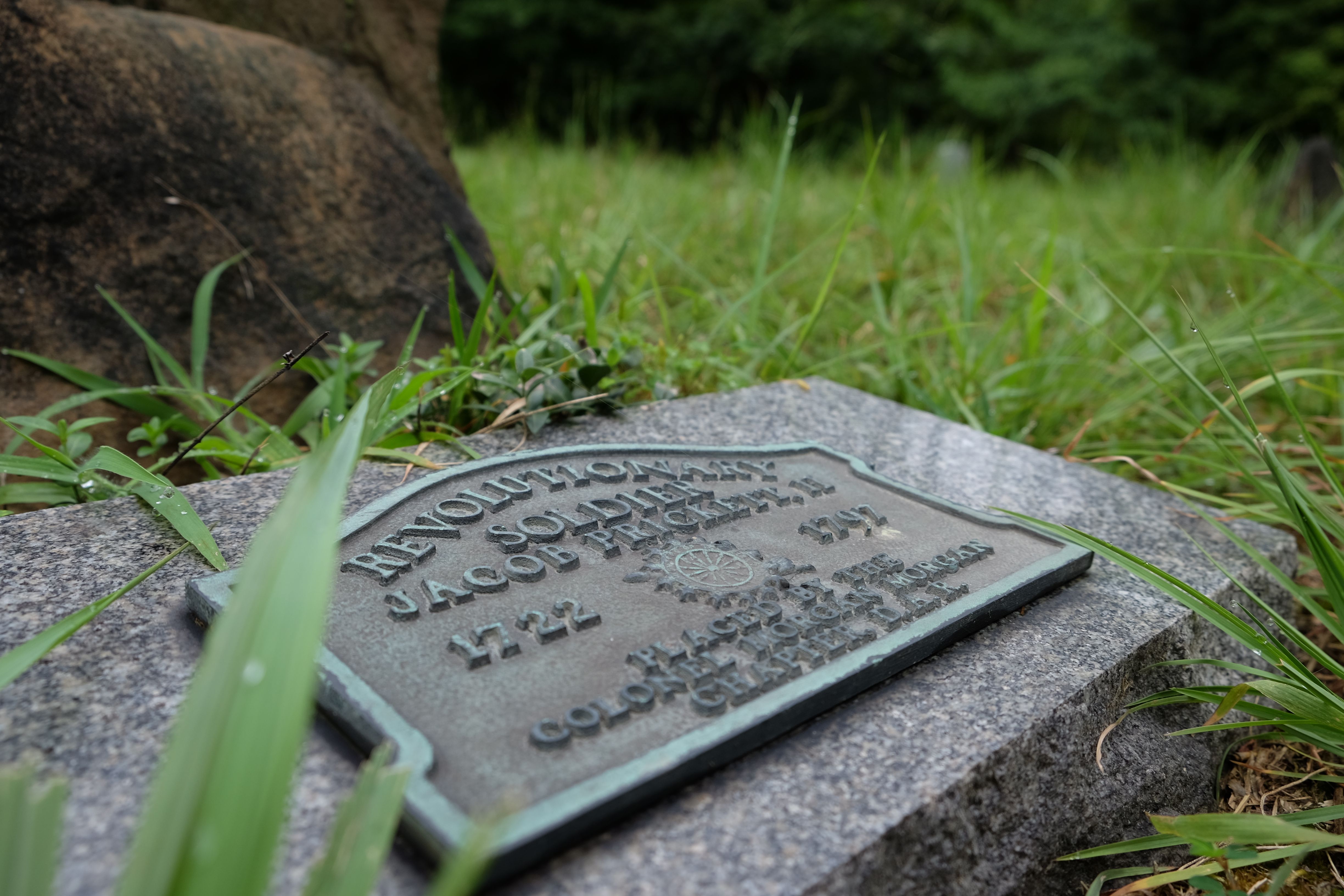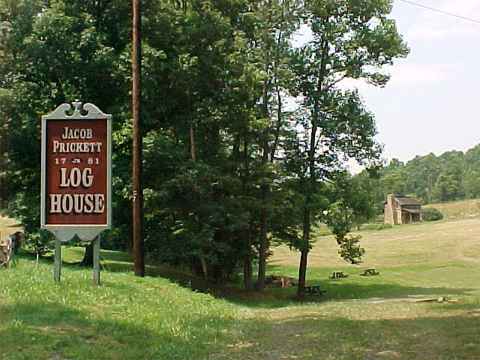b. 1722 Wilmington, Delaware
d. 14 Apr 1797 in Prickett's Fort Cem.,W. Va.
Prickett's Fort in Monongalia, WV
m: DOROTHY SPRINGER on 11 May 1745 Mount Holly,Burlington Co. N.J. Dorothy was born 4 june 1726 Evesham, Burlington Co., New Jersey and died 21 jan 1785 Prickett's Fort, WV
ISSUE:
DRUSILLA PRICKETT b. 1 Mar 1752 m: CAPT. MORGAN MORGAN d. 2 April 1817
JACOB's father filed a $500. marriage bond for his marriage to DOROTHY.
Jacob stood 5'10, and weighed 180 pounds. He had "stiff" black hair, and "snapping" black eyes. He was fierce in the defense of others, but was soft hearted and gentle with children.
The following is taken from the booklet "Pricketts Fort" by William J. Wilcox:
In 1759, Jacob was operating an Indian Trading Post at the mouth of Pricketts Creek. There is substantial evidence of several major Indian Villages, or campsites within a few miles of Jacob's Trading Post.
The most that can be determined about the Indians that he traded with are that they most likely were of Algonquin, Iroquois, or Appalachain stock.
That is to say, they could have been Delaware, Shawnee etc... or Mohawk, Senecas etc... During the Revolutionary war, the Wyandots (aka Hurons) came to the area and were extremely aggressive.
Nathaniel Springer deposed that he, Jacob Prickett, David Morgan, John Snodgrass and Pharoah Ryley, assembled on C'Capon River to await word from Lawrence Washington, Esq., (brother to George). What they were waiting for was to be informed of the terms for an expedition to Cheat River to scout lands for Lawrence Washington and Co. They set out on either the 28th or 29th of April in 1747. Nathaniel said that his uncle Evan Morgan kept a camp and did trading at the forks of the Cheat River. (Now called the Monongahela) He also said that the group explored Tygart River and Buckhannon, as well as the Monongahela. Nathaniel goes on to say that he and his group returned to their homes on the Opeckon, Fredrick County, in August 1747, there they gave to L. Washington, Esq., maps and other papers drafted by them during the expedition.
It is said that Jacob and other members of the original expedition lived near what is now Rivesville in the 1740's. In 1763, King George III, decreed that all lands west of the Allegheny mountains were Indian Lands, and not for settlement. This was decreed because of the Delaware and Iroquois complaints to the encroachment of their lands.
This is why Jacob makes no claim of settlement until 1772. In that year, Samuel Hanaway, a Surveyor, "Surveyed for Jacob Prickett 324 acres of land in Monongalia County, on Prickett's Creek, including his settlement made in the year 1772." In 1777, an act of the General Assembly made settlement legal in the Monongahela valley. They also granted 400 acres of land to each family who had settled on the "western waters" prior to 24 June 1778.
In 1774, Prickett's Fort was built. Tradition states that there was some eighty families living at the Prickett Settlement in fear of the Indians. There was at this time a larger settlement at Morgan's Town and at Clarksburg. The Monongahela valley was thickly covered with huge oaks and chestnut trees. It was a Herculean task to clear enough land for a crude cabin and garden. Wagons were not used because of the forest, so settlers carried what little they could on pack animals and on themselves.
Around 1780, Jacob built a mill near the fort. Payment for grinding grain was in grain; payment for sawing lumber was in lumber. Gathering ginseng paid between 30 and 35 cents a pound. Women and children gathered the dried roots for export to China. Money was scarce and when had, it could be of almost any origin. Spanish, British and French coins jangled together. Two hard days labor could get you a deer hide with the hair left on; or the promise of two days hard work at your bidding. Later in the 1700's, rye was exported as whiskey in large quantities.
The description of Prickett's Fort by Dr. Doddridge in 1822, follows:
There were sixteen cabins, a range of four on each wall. Large storage bins divided the cabins from each other. The outside walls, with sidewalls sloping inward, were ten feet high. At first the cabins had earthen floors later, some were fitted with puncheons. The pickets for the stockade were hewn seventeen feet and set in the ground five feet, which gave a stockade wall of twelve feet. The bastions were larger than the cabins, and were set one at each of the four angles of the stockade. Their outer parts projected two feet beyond the stockade walls. These overhanging sections had slatted floors, so enemies making a lodgment against the stockade might be fired upon, straight downward. The bastions were eight feet higher than the walls,were twelve feet square, and made of large hickory logs, with ample gun-spaces, or loopholes in and in between.
Within the stockade at the forward center of the grounds were two large buildings, each forty feet long and twenty feet wide and eight feet high. There were two gates, the main gate in the center of the northern wall, facing the river, and by the big spring, and the stock gate, in the center of the west wall of the stockade, near the little spring. The stables and stock-pens were all at the far southern end of the stockade. Both gates were made of logs and thick slabs, and hinged so that they would fold inward.
From Now and Long Ago:
DAVID MORGAN used to tell a story about "JAKE PRICKETT and the bean-shot Brave." The story was told to his nephew's "Chunk" and James, sons of Col. Zackwell Morgan. Chunk had a hunting camp on a dreen of Little Paw Paw Creek. Chunk had just married, and he and his brother built a cabin for the newlyweds to set up housekeeping in. Uncle Dave & Henry Batten came by, and were there to share the first fire and first meal, that was made in that cabin.
In the evening a "soiree" was held. David got to telling funny but true stories of his and JACOB PRICKETT'S adventures.
One story told that night was about the time that he and Jacob captured an Indian Brave. (The story, as printed, does not relate the whole particulars, as related by David Morgan.) The two men were out of lead, so Jacob loaded his musket with beans. Jacob shot the brave in the rump, and as the brave "was dancing around and yelping Prickett hit him with his fist and knocked him out, and they tied him and turned him in at Fort Rogers and later was exchanged for the Ramsey boy, who had been with the Indians for a year." It was a good story and everybody laughed hearing Uncle Dave tell about that Indian with beans in his bottom."
From the book "THE ROSS FAMILY BRANCH OF THE PRICKETT FAMILY" by Nora Ross (1989), found in the Marion County Library, West Virginia, we learn:
"JACOB PRICKETT served as a spy for the Virginia Militia before he came of age, and later, was Captain of the Monongalia County, Virginia troops in the Revolutionary war. After his marriage to DOROTHY, Captain JACOB (JAKE) again offered his services to the state of Virginia Militia, serving under General George Washington in Braddock's 1758 campaign against the Indians of the Monongahela River region. In 1759, JACOB moved his family to Monongalia County, (West) Virginia, where he had a trading post and built what is assumed to be the first mill in that area. By 1774, he, along with his brothers, Josiah and Isaiah, built Pricketts Fort...."
Issue:
Josiah Prickett b. 1746 m: Charity Taylor (3 Aug 1808 she m: Wm.Jolliffe)
John Prickett b. 1748 m: Elizabeth Hays
Isaac Prickett b. 1 March 1752 m: Mary Campbell
He was paid 54.10.-. in Nov. 1777 For being a Spy in "Monongohala" Co., WVA
(pp.505 VIRGINIA MILITARY RECORDS)
TWINS
DRUSILLA PRICKETT b.1 Mar 1752 m: CAPT. MORGAN MORGAN d. 2 April 1817
Isaiah Prickett b. 1757 d. 2 Oct 1774 Murdered & scalped by Indians.
Jacob Prickett, Jr. b. 1 April 1758 m: Jemimah Pindle
Nancy Ann Prickett b. 1762 m: Reuben Bunner (Boner)
James Prickett b. 8 Mar 1765 m: Mary Springer
Dorothy Prickett m: Sergeant James Dunn
Mary Prickett m: Jacob Lucas
Martha Prickett m: Peter Parker
Thomas Prickett (?) m: Ann Wyatt
(A Thomas Prickett marries Evan's dau. Elizabeth Morgan on 9 Oct 1809)
Written by: Kelley Ward
b. 1722 Wilmington, Delaware
d. 14 Apr 1797 in Prickett's Fort Cem.,W. Va.
Prickett's Fort in Monongalia, WV
m: DOROTHY SPRINGER on 11 May 1745 Mount Holly,Burlington Co. N.J. Dorothy was born 4 june 1726 Evesham, Burlington Co., New Jersey and died 21 jan 1785 Prickett's Fort, WV
ISSUE:
DRUSILLA PRICKETT b. 1 Mar 1752 m: CAPT. MORGAN MORGAN d. 2 April 1817
JACOB's father filed a $500. marriage bond for his marriage to DOROTHY.
Jacob stood 5'10, and weighed 180 pounds. He had "stiff" black hair, and "snapping" black eyes. He was fierce in the defense of others, but was soft hearted and gentle with children.
The following is taken from the booklet "Pricketts Fort" by William J. Wilcox:
In 1759, Jacob was operating an Indian Trading Post at the mouth of Pricketts Creek. There is substantial evidence of several major Indian Villages, or campsites within a few miles of Jacob's Trading Post.
The most that can be determined about the Indians that he traded with are that they most likely were of Algonquin, Iroquois, or Appalachain stock.
That is to say, they could have been Delaware, Shawnee etc... or Mohawk, Senecas etc... During the Revolutionary war, the Wyandots (aka Hurons) came to the area and were extremely aggressive.
Nathaniel Springer deposed that he, Jacob Prickett, David Morgan, John Snodgrass and Pharoah Ryley, assembled on C'Capon River to await word from Lawrence Washington, Esq., (brother to George). What they were waiting for was to be informed of the terms for an expedition to Cheat River to scout lands for Lawrence Washington and Co. They set out on either the 28th or 29th of April in 1747. Nathaniel said that his uncle Evan Morgan kept a camp and did trading at the forks of the Cheat River. (Now called the Monongahela) He also said that the group explored Tygart River and Buckhannon, as well as the Monongahela. Nathaniel goes on to say that he and his group returned to their homes on the Opeckon, Fredrick County, in August 1747, there they gave to L. Washington, Esq., maps and other papers drafted by them during the expedition.
It is said that Jacob and other members of the original expedition lived near what is now Rivesville in the 1740's. In 1763, King George III, decreed that all lands west of the Allegheny mountains were Indian Lands, and not for settlement. This was decreed because of the Delaware and Iroquois complaints to the encroachment of their lands.
This is why Jacob makes no claim of settlement until 1772. In that year, Samuel Hanaway, a Surveyor, "Surveyed for Jacob Prickett 324 acres of land in Monongalia County, on Prickett's Creek, including his settlement made in the year 1772." In 1777, an act of the General Assembly made settlement legal in the Monongahela valley. They also granted 400 acres of land to each family who had settled on the "western waters" prior to 24 June 1778.
In 1774, Prickett's Fort was built. Tradition states that there was some eighty families living at the Prickett Settlement in fear of the Indians. There was at this time a larger settlement at Morgan's Town and at Clarksburg. The Monongahela valley was thickly covered with huge oaks and chestnut trees. It was a Herculean task to clear enough land for a crude cabin and garden. Wagons were not used because of the forest, so settlers carried what little they could on pack animals and on themselves.
Around 1780, Jacob built a mill near the fort. Payment for grinding grain was in grain; payment for sawing lumber was in lumber. Gathering ginseng paid between 30 and 35 cents a pound. Women and children gathered the dried roots for export to China. Money was scarce and when had, it could be of almost any origin. Spanish, British and French coins jangled together. Two hard days labor could get you a deer hide with the hair left on; or the promise of two days hard work at your bidding. Later in the 1700's, rye was exported as whiskey in large quantities.
The description of Prickett's Fort by Dr. Doddridge in 1822, follows:
There were sixteen cabins, a range of four on each wall. Large storage bins divided the cabins from each other. The outside walls, with sidewalls sloping inward, were ten feet high. At first the cabins had earthen floors later, some were fitted with puncheons. The pickets for the stockade were hewn seventeen feet and set in the ground five feet, which gave a stockade wall of twelve feet. The bastions were larger than the cabins, and were set one at each of the four angles of the stockade. Their outer parts projected two feet beyond the stockade walls. These overhanging sections had slatted floors, so enemies making a lodgment against the stockade might be fired upon, straight downward. The bastions were eight feet higher than the walls,were twelve feet square, and made of large hickory logs, with ample gun-spaces, or loopholes in and in between.
Within the stockade at the forward center of the grounds were two large buildings, each forty feet long and twenty feet wide and eight feet high. There were two gates, the main gate in the center of the northern wall, facing the river, and by the big spring, and the stock gate, in the center of the west wall of the stockade, near the little spring. The stables and stock-pens were all at the far southern end of the stockade. Both gates were made of logs and thick slabs, and hinged so that they would fold inward.
From Now and Long Ago:
DAVID MORGAN used to tell a story about "JAKE PRICKETT and the bean-shot Brave." The story was told to his nephew's "Chunk" and James, sons of Col. Zackwell Morgan. Chunk had a hunting camp on a dreen of Little Paw Paw Creek. Chunk had just married, and he and his brother built a cabin for the newlyweds to set up housekeeping in. Uncle Dave & Henry Batten came by, and were there to share the first fire and first meal, that was made in that cabin.
In the evening a "soiree" was held. David got to telling funny but true stories of his and JACOB PRICKETT'S adventures.
One story told that night was about the time that he and Jacob captured an Indian Brave. (The story, as printed, does not relate the whole particulars, as related by David Morgan.) The two men were out of lead, so Jacob loaded his musket with beans. Jacob shot the brave in the rump, and as the brave "was dancing around and yelping Prickett hit him with his fist and knocked him out, and they tied him and turned him in at Fort Rogers and later was exchanged for the Ramsey boy, who had been with the Indians for a year." It was a good story and everybody laughed hearing Uncle Dave tell about that Indian with beans in his bottom."
From the book "THE ROSS FAMILY BRANCH OF THE PRICKETT FAMILY" by Nora Ross (1989), found in the Marion County Library, West Virginia, we learn:
"JACOB PRICKETT served as a spy for the Virginia Militia before he came of age, and later, was Captain of the Monongalia County, Virginia troops in the Revolutionary war. After his marriage to DOROTHY, Captain JACOB (JAKE) again offered his services to the state of Virginia Militia, serving under General George Washington in Braddock's 1758 campaign against the Indians of the Monongahela River region. In 1759, JACOB moved his family to Monongalia County, (West) Virginia, where he had a trading post and built what is assumed to be the first mill in that area. By 1774, he, along with his brothers, Josiah and Isaiah, built Pricketts Fort...."
Issue:
Josiah Prickett b. 1746 m: Charity Taylor (3 Aug 1808 she m: Wm.Jolliffe)
John Prickett b. 1748 m: Elizabeth Hays
Isaac Prickett b. 1 March 1752 m: Mary Campbell
He was paid 54.10.-. in Nov. 1777 For being a Spy in "Monongohala" Co., WVA
(pp.505 VIRGINIA MILITARY RECORDS)
TWINS
DRUSILLA PRICKETT b.1 Mar 1752 m: CAPT. MORGAN MORGAN d. 2 April 1817
Isaiah Prickett b. 1757 d. 2 Oct 1774 Murdered & scalped by Indians.
Jacob Prickett, Jr. b. 1 April 1758 m: Jemimah Pindle
Nancy Ann Prickett b. 1762 m: Reuben Bunner (Boner)
James Prickett b. 8 Mar 1765 m: Mary Springer
Dorothy Prickett m: Sergeant James Dunn
Mary Prickett m: Jacob Lucas
Martha Prickett m: Peter Parker
Thomas Prickett (?) m: Ann Wyatt
(A Thomas Prickett marries Evan's dau. Elizabeth Morgan on 9 Oct 1809)
Written by: Kelley Ward
